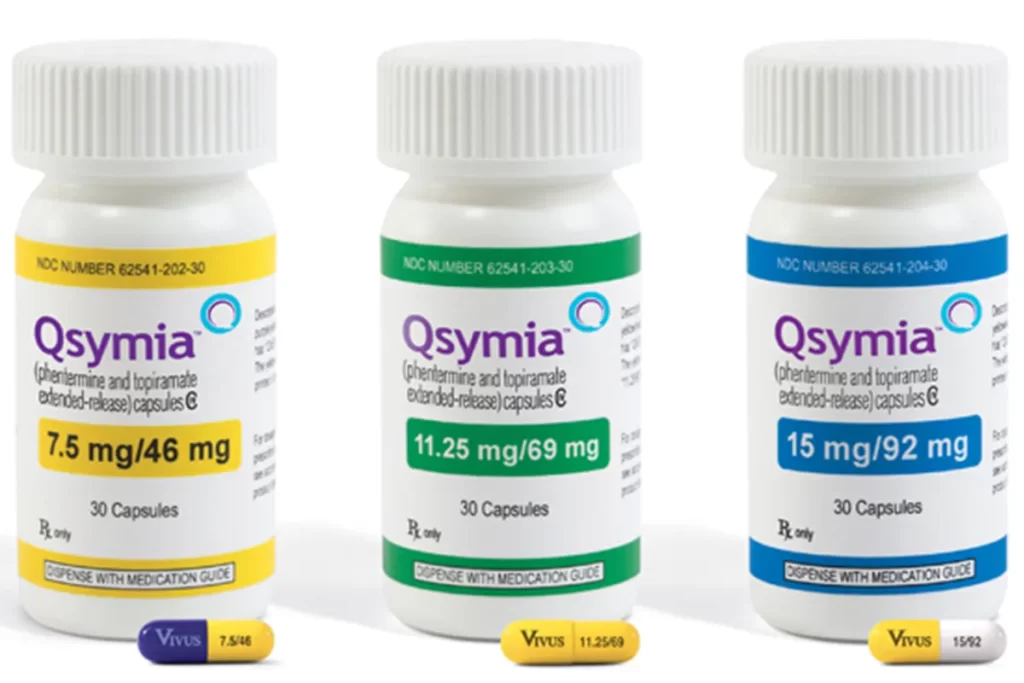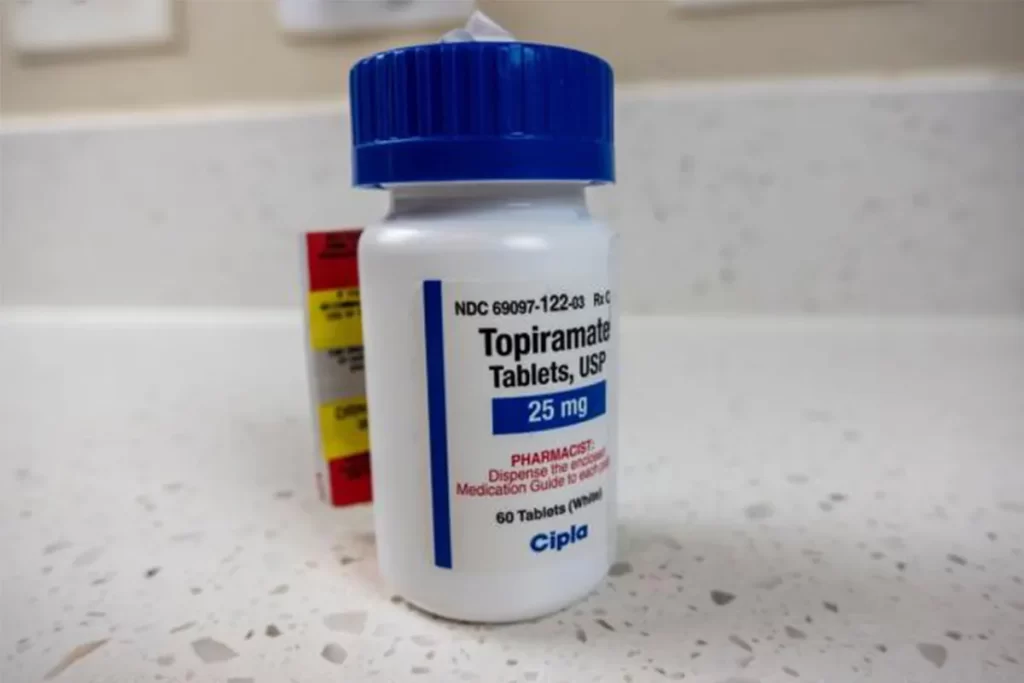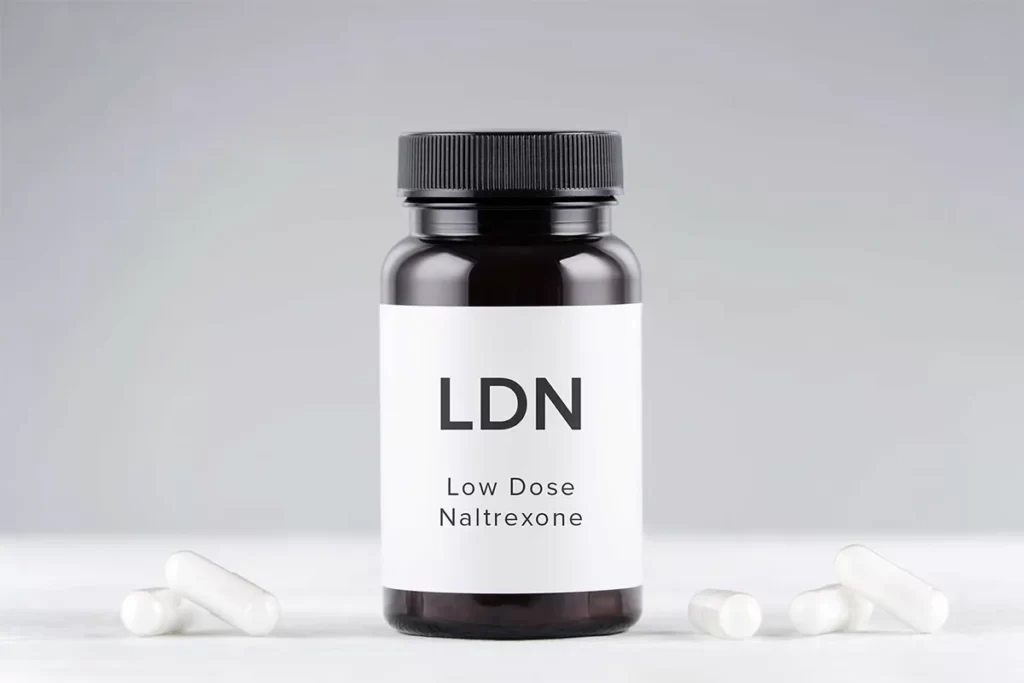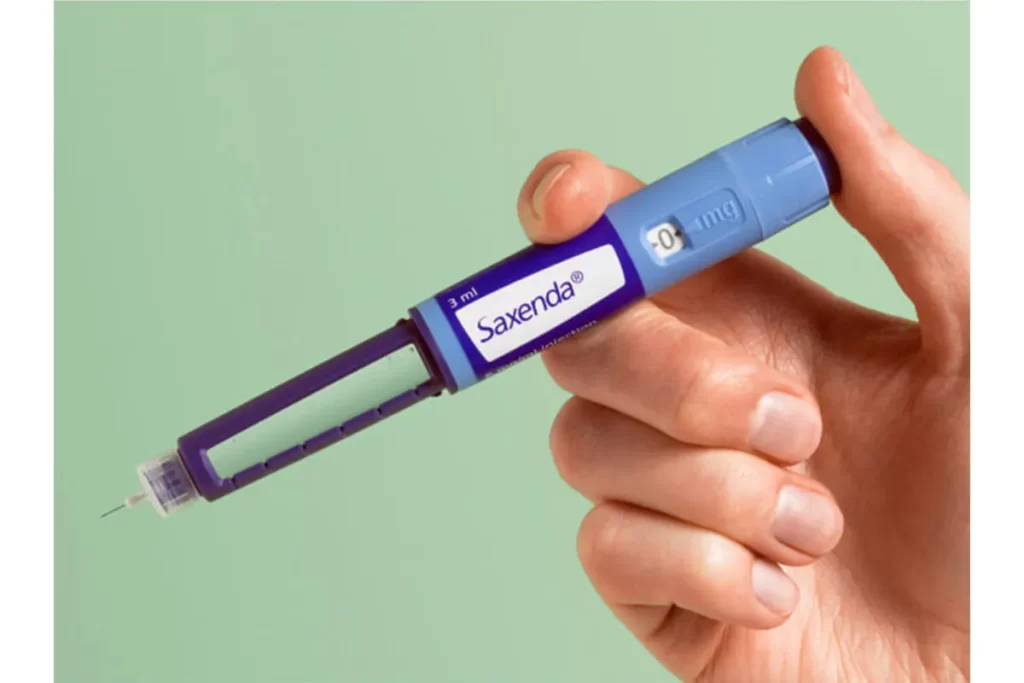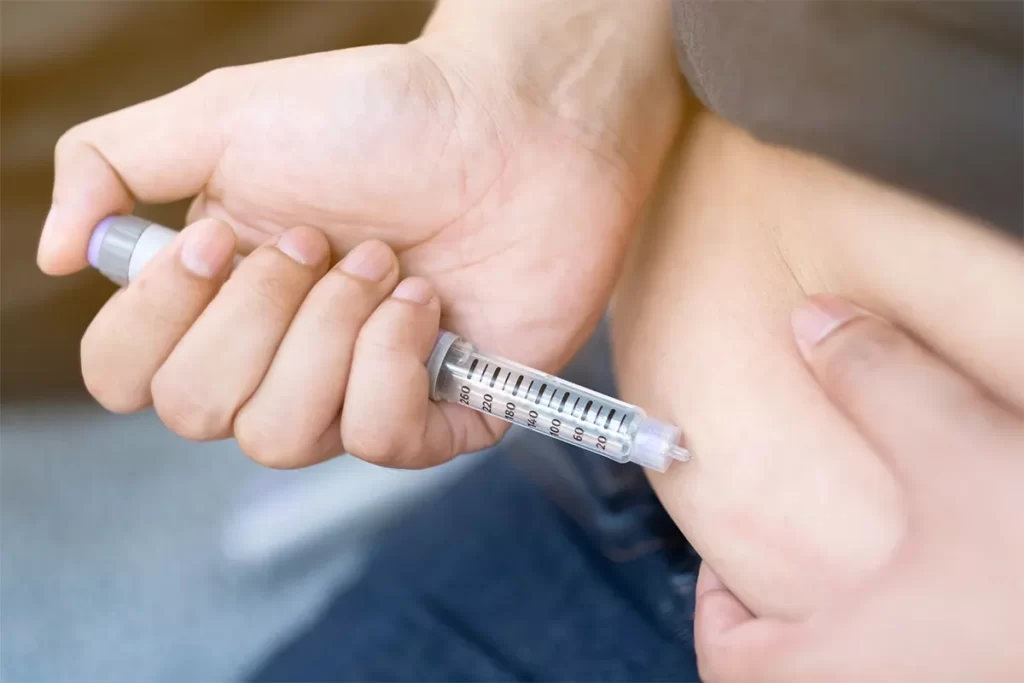Thigh Liposuction: Reshaping Your Legs
-
 Written by
Michael J. Ormsbee
Written by
Michael J. Ormsbee
- LAST UPDATED November 9, 2023
The thigh region often becomes a significant pain point and cause of insecurity for many individuals. With genetics, weight changes, aging, and other factors playing a role, stubborn fat tends to accumulate on the outer and inner thighs, making them resilient to diet and exercise. This culminates in a disproportionate silhouette, characterized by bulky thighs bereft of contour. Consequently, those disturbed by “saddlebags,” large inner thighs, or an overall heaviness in the legs are inclined to consider thigh liposuction.
Candidates for Thigh Liposuction
Determining if you are a good candidate for thigh liposuction is an important first step. The best candidates for thigh lipo are men or women bothered by disproportionate fat pockets on the inner or outer thighs that have not improved through diet changes, exercise, or weight loss efforts.
During your consultation, your board-certified plastic surgeon will perform a physical exam and assess your health to determine if you meet the criteria to achieve safe, satisfying thigh fat removal results. Ideal candidates typically share these characteristics:
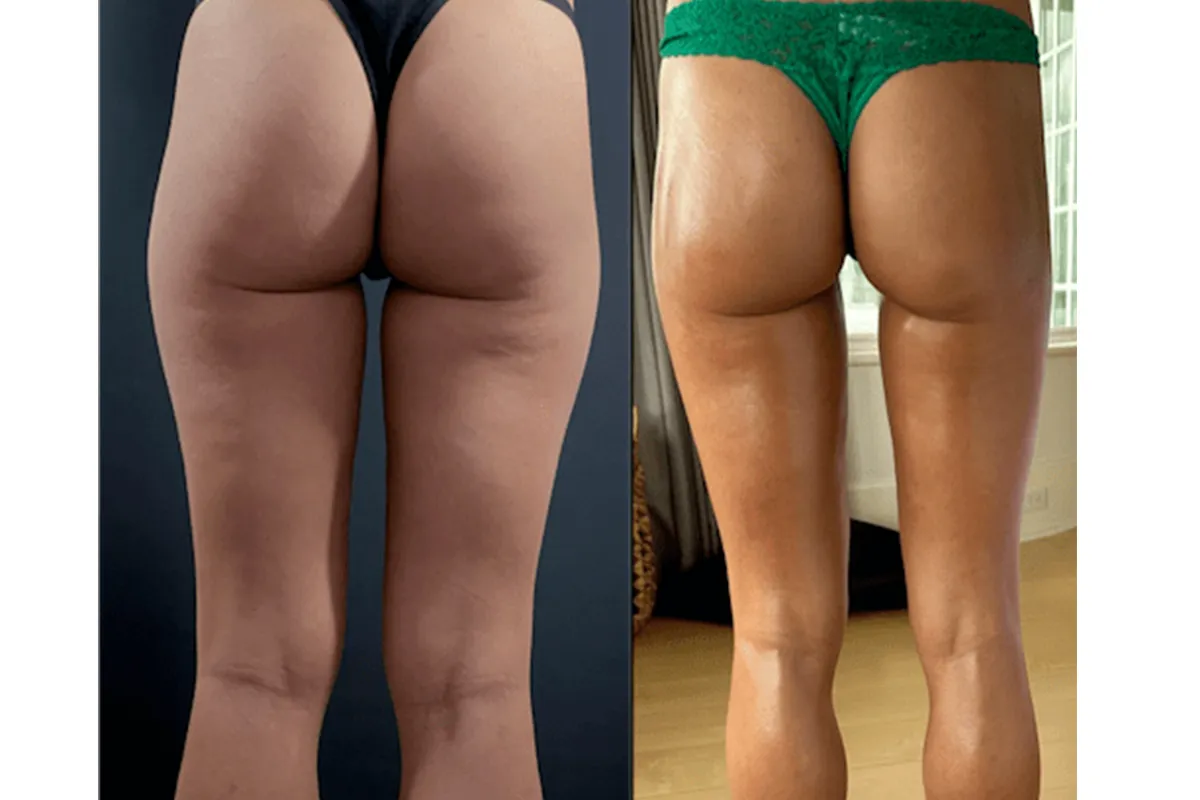
- Localized Fat Deposits on Thighs: Thigh liposuction works best for removing concentrated areas of fat rather than significant excess weight distributed evenly over the body. The best candidates have good overall body weight but are bothered by stubborn, disproportionate fat pockets on the inner, outer, or posterior thigh zones.
- BMI Under 30: Your body mass index should ideally fall under the overweight range of 25-30. Those who are within normal limits or just slightly over are better candidates. People who are very overweight or obese have excess fat distributed throughout, making them poor candidates for a regional procedure like thigh lipo.
- Good Skin Elasticity: The ability of your skin to retract after liposuction determines results. If skin lacks elasticity, it may appear loose or saggy after fat removal rather than smooth and contoured. Older patients or those with compromised skin elasticity may require additional skin tightening treatments for optimal thigh lipo results.
- Realistic Expectations: Understanding that liposuction removes fat but does not improve cellulite, tighten skin significantly, or produce dramatic weight loss is important. Thigh lipo refines shape but will not drastically change your lower body or transform obese thighs into very thin thighs. Keeping expectations realistic helps ensure patient satisfaction.
- Non-smoker: Smoking severely impairs circulation and wound healing. Most surgeons require stopping smoking for at least 6 weeks before and after thigh liposuction.
- Good Physical Health: Ideal candidates have few chronic health conditions, take no blood thinning medications, and have clearance for elective surgery from their medical doctor. Certain health problems may make liposuction under general anesthesia too risky.
- At Stable Adult Weight: The best results come from removing stubborn fat pockets in adults who are already at or near their ideal weight. Liposuction should not be viewed as a weight loss solution. The thighs should not actively be gaining weight prior to thigh lipo.
- No Significant Loose Skin: Individuals with large amounts of loose, hanging skin on the thighs are better candidates for procedures like a thigh lift rather than liposuction alone. Thigh lipo targets small, localized areas of fat rather than global thigh skin laxity.
- Committed to Maintaining Results: The fat removed by thigh liposuction will not come back if you maintain your results through healthy eating and exercise habits. Candidates should be committed to this lifestyle after surgery.
- Time for Proper Recovery: Undergoing thigh fat removal requires 1-2 weeks off work for recovery. You’ll also need to avoid certain activities for about a month post-surgery. Being able to take proper time to heal and attend follow-ups is essential.
The best first step is an in-person consultation where your plastic surgeon can evaluate your thighs, take measurements, assess skin quality, and determine if you satisfy these candidate criteria. Thigh liposuction produces satisfying, lasting results for men and women who meet these qualifications. Those who do not meet the criteria would be better served by alternative body contouring treatments to address their concerns.
With well-chosen candidates who have the right goals, realistic outlook, and ability to maintain their new figure, thigh fat removal is highly effective for providing slimmer, better-contoured legs that complement your body’s natural proportions. Schedule a consultation to determine your candidacy and get the thighs you’ve always wanted.
What to Expect from Thigh Liposuction
Understanding the step-by-step process of a thigh liposuction procedure will help you know what to anticipate on your surgery day. Thigh lipo is typically performed as an outpatient surgery either under general anesthesia which puts you fully to sleep or using local anesthesia combined with IV sedation to keep you comfortable and relaxed.
The procedure generally involves the following steps:
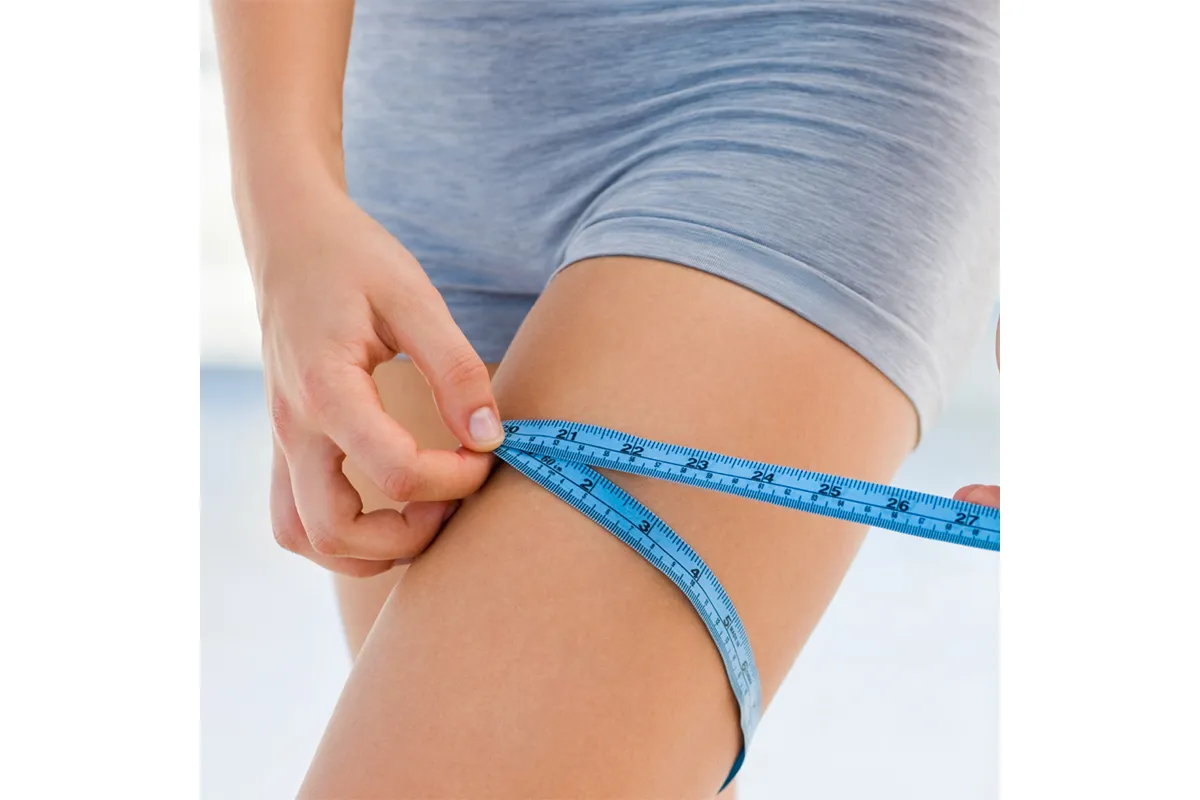
Preparation and Markings
On the day of your thigh liposuction, you will be brought to the procedure room and helped onto the operating table. Your surgeon will first thoroughly cleanse and sterilize the thigh areas to be treated. Precise markings are made with a surgical pen to outline the agreed-upon treatment zones on the inner thighs, outer thighs, or posterior thighs. Your vital signs will be monitored throughout the process.
Anesthesia Administration
Once you are relaxed and comfortable, your anesthesiologist will administer either general anesthesia through an IV to put you fully asleep or local anesthetic injections combined with IV sedation. A muscle relaxant may also be given to prevent muscle movement during the procedure. You will be closely monitored but feel minimal to no discomfort during the thigh liposuction under anesthesia.
Incision Creation
Using a sterile scalpel, your plastic surgeon will make very small incisions of less than 1 centimeter in strategic locations where the liposuction cannula will be inserted. Common thigh liposuction incision sites include the inguinal crease near the bikini line, toward the inner knee, and on the upper posterior thigh. Incisions are placed to be easily concealed.
Inserting the Cannula
Once incisions are made, your surgeon will insert the cannula which is a thin, blunt-tipped tube connected to a vacuum device. The cannula is passed through the incisions and threaded under the skin of the thigh to reach the deeper fat deposits in the areas to be suctioned. Small back-and-forth controlled motions will be used to break up and loosen excess fat tissue that will then be suctioned out.
Treating Target Areas
Your surgeon will use careful precise techniques to suction out fat deposits from the specific inner, outer, and/or back of thigh areas you wish to be contoured. They may insert the cannula from several access points and at various depths for optimal removal of disproportionate thigh fat and sculpting of improved contours. Removing fat from certain zones helps create a better proportion between areas.
Repeated Passes and Layering
Typically, several passes will be made over each part of the thigh being suctioned to ensure all excess fat is removed in a gradual, even manner. Your surgeon may do superficial as well as deeper passes with the cannula to comprehensively treat the unwanted fat. They will often go back and do detail work and touch-ups, looking at the thighs from all angles to produce precision results.
Final Incision Closure
Once adequate fat removal and contouring have been achieved based on the pre-operative treatment plan, your surgeon will remove the cannula and close the incision sites using absorbable sutures placed carefully underneath the skin. Steri-strips and bandages are applied as needed. A compression garment is often placed over the thighs before you wake up from anesthesia.
The typical thigh liposuction procedure performed by an experienced surgeon takes one to three hours depending on the number of areas treated and the amount of fat to be removed. One or both legs may done during the same session. With small incisions and precise technique, thigh lipo produces natural-looking results and minimal scarring.
What to Expect After Surgery
After lipo on legs, you will wake up from anesthesia feeling fairly drowsy and sleepy. You may experience some pain and throbbing which will be controlled with prescription pain medication. You’ll notice some swelling, bruising, and numbness over the treated thigh areas which is normal. Most patients can go home within a few hours of the procedure.
Be sure to arrange for someone to drive you home, monitor you closely, and assist you with tasks for 24 hours after thigh liposuction due to the effects of anesthesia. Your surgeon will provide all necessary post-op care instructions for changing dressings, wearing compression garments, and more to optimize healing.
Thigh liposuction produces dramatic yet natural-looking results when performed by a board-certified plastic surgeon. Knowing what to anticipate during your thigh lipo will help you be an informed patient. With small incisions, precise techniques, and skillful fat removal, lipo on legs can provide the slim, sculpted thigh contours you’ve been wanting.
Recovering After Thigh Liposuction
The recovery process following thigh liposuction is an important consideration when deciding on this procedure. Understanding what to expect in the days and weeks after your surgery will help ensure you recover comfortably.
The thigh region covers a relatively large surface area, so swelling and bruising is common. Follow all your plastic surgeon’s post-operative instructions closely for optimal healing. Typical recovery guidelines include:
Initial Recovery Period
Expect moderate pain, throbbing, and discomfort for the first 24-48 hours after thigh liposuction. Prescription medications are provided to manage pain levels. Swelling is also common early on as tissue and fluids shift in response to fat removal. Bruising may develop a few days after surgery as blood pools under the skin.
Keeping your legs elevated as much as possible for the first week will help minimize swelling and fluid build-up. Your surgeon may recommend using cold compresses or ice packs (wrapped in cloth) periodically for the first 2-3 days post-surgery to reduce inflammation and swelling. Stay well hydrated by drinking water and avoid bending over or straining.
You will need some assistance with daily tasks in the first few days after thigh liposuction. Arrange for someone to drive you home, monitor you closely for the first 24 hours, and help with daily functions like cooking, dressing, etc. for at least 3-4 days.
Wearing Compression Garments
Your surgeon will provide a tight-fitting compression garment to be worn over the treated thighs as directed, usually for 2-4 weeks continuously aside from cleaning. In some cases, compression bandages rather than garments are wrapped firmly over the thighs to promote proper healing.
Compression helps minimize swelling, support skin retraction, and prevent fluid build-up after thigh lipo. Your garment should feel snug but not painfully tight. You’ll need to keep it clean and replace it as needed if it loses elasticity. Compression is key during thigh lipo recovery.
Activity Level and Return to Work
Avoid any strenuous exercise or activities that raise your heart rate for 4-6 full weeks after undergoing thigh liposuction. Your doctor will advise when you can start doing light exercises like short, gradual walks. Avoid activities like weight lifting, running, aerobics, hot yoga, and similar workouts that may stress the body. Listen to your surgeon’s guidance as well as your body about eading back into exercise.
Most patients take off 1-2 full weeks from their jobs and daily routines after thigh lipo. By 10-14 days, light day-to-day activities may feel comfortable, but avoid prolonged periods of sitting or standing at first. Ease back into work and schedules gradually over 2-3 weeks if your occupation involves physical activity. Expect some fatigue as your body is healing.
Long-Term Healing Process
It will take a few months for the final results to be fully visible after thigh liposuction. The majority of swelling should go down after about 4-6 weeks. Bruising and stiffness will gradually resolve. But swelling may persist along with some numbness for 2-3 months as it can take this long for all residual inflammation to completely subside and for the skin to fully retract.
Avoid smoking at all costs during thigh lipo recovery, as nicotine restricts blood flow and oxygen and can lead to delayed wound healing, skin damage, and other problems. Stay in close contact with your surgeon’s office during recovery to monitor for any abnormalities.
With diligent self-care and close adherence to the postoperative directions provided by your plastic surgeon, thigh liposuction patients can recover smoothly and enjoy their refined slimmer thigh contours.
See Also:
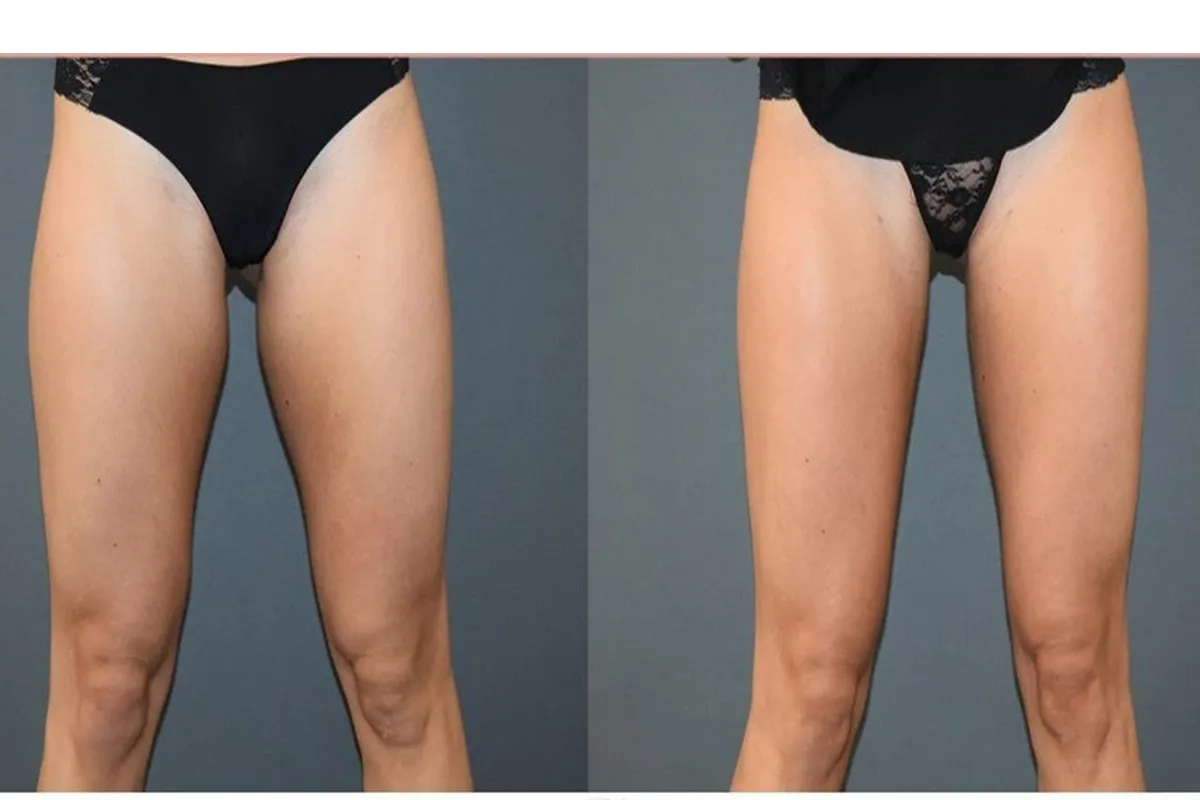
Benefits of Thigh Liposuction
When performed by a skilled, experienced cosmetic surgeon on an appropriate candidate, thigh liposuction can provide transformative yet natural-looking improvements to the shape and appearance of your legs. Common benefits patients enjoy include:
Reduced Thigh Circumference
One of the most noticeable benefits is a reduction in the overall circumference and size of the treated thighs. By directly removing concentrated pockets of excess fat via suction, thigh liposuction reduces both the width and volume of the thighs for a slimmer silhouette. Outer thighs will benefit the most with typical reductions of 2-4 inches from the circumference. The effect is thighs that appear smoother, slimmer, and more proportional.
Enhanced Body Proportions
In many cases, liposuction patients have thighs that are disproportionately large compared to their upper body and general frame size. Thigh liposuction sculpts the fat pockets causing this imbalance, creating better symmetry between the thighs and the rest of your physique. Your upper body will appear more balanced with slimmer thighs, rather than dominated by excess thigh mass. Your overall figure will be more oval feminine versus excessively “bottom heavy”.
Refined Contours and Shape
In addition to smaller thigh circumference, thigh lipo also refines the actual shape and contours of your legs. Bulges get smoothed into sleek curves. The zones treated, like saddlebags or inner thighs, will transition from bulky and irregularly lumpy to streamlined and shapely. Your enhanced silhouette will showcase slim thighs yet retain subtle muscular definition for an athletic rather than overly thin appearance.
Elimination of Rubbing Discomfort
For those who experience chafing, rubbing, rashes and general discomfort from excess inner thigh fat, thigh liposuction can provide immense relief by decreasing friction between the thighs. You’ll be able to walk, run, and go about daily life free of this annoyance. The inner thigh definition is created to stop constant uncomfortable medial thigh contact.
Wider Clothing Options
The reduction in thigh size opens up new options when it comes to dressing and finding clothes that fit and flatter your new figure. Pants, dresses, and skirts previously too snug to fit over your thighs comfortably will now fit smoothly. Form-fitting dresses and skinny jeans can be worn with confidence. A slimmer thigh profile gives you the freedom to show off your legs.
Permanent Fat Removal
Unlike dieting where fat loss is temporary, the fat elimination achieved by thigh liposuction is permanent. The suctioned fat cells are gone for good. As long as you maintain your lower body weight through proper nutrition and fitness, the sculpted thigh contours should be very long-lasting over decades. However, skin laxity does continue with age.
Lasting Self-Esteem Boost
For many thigh liposuction patients, the reduction of disproportionate thigh size provides a noticeable boost in confidence. No longer feeling self-conscious about oversized legs in form-fitting clothes allows many patients to finally flaunt their figures freely. Embracing your body through fitness becomes more enjoyable. The satisfaction of smooth thighs in proportion with the rest of your body has profound self-esteem benefits.
With a board-certified plastic surgeon properly executing the procedure on an ideal candidate, dramatic yet natural thigh shaping can be achieved safely with thigh liposuction. Be sure to follow all post-procedure instructions to ensure proper healing so you can enjoy your slimmer, better-contoured thighs for years to come.
Potential Thigh Liposuction Risks and Limitations
While thigh liposuction is considered a relatively safe procedure when performed by a qualified plastic surgeon, it does carry some inherent risks and limitations to consider when deciding if it is right for you. Possible issues include:
Infection
There is a low risk of developing an infection after any invasive procedure like liposuction. Your surgeon will take steps to minimize infection risk such as sterile techniques, antibiotics, and proper incision care. Signs of infection include increasing swelling, pain and redness, warmth at incision sites, drainage, or fever above 100.4 degrees F. Call your doctor promptly if these occur.
Numbness and Nerve Damage
Thigh liposuction techniques may potentially damage sensory nerves with either temporary or permanent numbness in the thigh. Your plastic surgeon uses great care to insert and manipulate the cannula in ways that preserve nerve function. However, some small areas of numbness or nerve damage can occur due to the nature of suctioning deep fat. For most patients, sensation returns fully with time as nerves heal.
Contour Irregularities
Without proper surgical skill, technique, and artistry, surface irregularities like depressions, bumps, or asymmetry may appear on the thighs after liposuction. An inexperienced surgeon is more apt to create these defects. Choosing a board-certified plastic surgeon with specialized liposuction training reduces this risk. Minor touch-up procedures can address contour issues if needed.
Loose, Sagging Skin
If the skin on the thighs lacks good elasticity, the removal of underlying fat can leave some redundant, sagging skin. Those with poor skin quality may require additional skin tightening procedures after thigh lipo to retract and smooth the thigh skin. This risk is greater for older patients whose skin has lost collagen. Your surgeon will assess your skin tone and recommend a customized treatment plan.
Blood Clots
A rare but serious risk with any surgery is thromboembolism – the formation of blood clots that travel to the lungs called pulmonary emboli. Your doctor will evaluate your risk factors for clots and take preventive measures before thigh lipo like compression stockings. Notify your doctor at once if you develop chest pain, difficulty breathing, calf pain, or leg swelling.
Fluid Imbalance
In very extensive liposuction cases, the large amounts of fat removal combined with fluid injections can trigger fluid balance issues. Your blood pressure, fluid levels, and circulation will be carefully monitored during and after thigh liposuction to avoid this risk.
Delayed Wound Healing
Factors like poor nutrition, smoking, diabetes, or immune issues can delay the proper healing of thigh liposuction incisions. Side effects of certain medications also impact wound healing. Disclose any factors that could impair healing so preventative steps can be taken. Follow post-op directions diligently to prevent wound problems.
Although these risks are infrequent when procedures are executed with care, they should be understood when deciding if leg liposuction aligns with your goals and health status. Your plastic surgeon can determine how to minimize risks and customize treatment for your unique thigh concerns.
Understanding Thigh Liposuction Limitations
In considering thigh liposuction, it is also important to have realistic expectations about the limitations of what this procedure can achieve:
- Moderate fat removal only: Liposuction is not a weight loss procedure. It only removes small, localized fat deposits. Those with obesity or who need significant fat reduction are not candidates.
- Does not improve cellulite: While contouring thighs, lipo only removes fat under the skin. Cellulite dimpling in the skin itself cannot be significantly improved and may appear more visible.
- Requires athletic lifestyle upkeep: The removed fat can return if you regain weight. An active fitness regimen is key to maintaining thigh lipo results in long-term.
- Complementary procedures may be needed: Depending on your skin tone, additional skin tightening treatments before or after may optimize thigh results and prevent loose skin.
- Natural-looking, not radical change: Thigh lipo smoothes and slims thighs, but cannot make obese thighs skinny. The change should appear natural.
Having a clear understanding of thigh liposuction’s risks, limitations, and reasonable outcomes will produce the best experience and satisfaction with your chosen procedure.
Conclusion
For those troubled by disproportionate, diet- and exercise-resistant fat on the inner or outer thighs, thigh liposuction can dramatically improve thigh contours and shape. However, having realistic expectations of the procedure’s capabilities and risks is vital.
The ideal candidates will already live a healthy lifestyle yet find certain thigh fatty areas unresponsive. When performed skillfully by an experienced board-certified plastic surgeon, leg liposuction can help patients finally achieve gorgeous, slimmer thighs and the sculpted leg silhouette they desire.
Be sure to select a premier surgeon, follow all pre- and post-procedure instructions, and allow sufficient healing time to maximize your leg liposuction results. This procedure can help provide beautiful body proportions, confidence in your legs, and an expanded wardrobe. Schedule a consultation to see if thigh liposuction is appropriate for realizing your aesthetic goals.

Frequently Asked Questions about thigh liposuction
How long can I expect the results from thigh liposuction to last?
The results from your thigh liposuction procedure are essentially permanent, as the fat cells are literally being removed from your body. However, this requires that you maintain a stable weight moving forward. Gaining a significant amount of weight could potentially cause any remaining fat cells in your thighs to grow. Additionally, it's important to note that the aging process can lead to decreased skin elasticity over time, which could subtly impact the overall appearance of your results.
What kind of costs should I anticipate for thigh liposuction?
The cost of leg liposuction can vary quite a bit depending on several contributing factors such as the extent of treatment, your geographic location, and the experience level of your surgeon. However, you can generally expect to pay somewhere between $4000 - $8000 for this procedure. Unfortunately, because this is considered a cosmetic procedure, it's not typically covered by health insurance.
How can I ensure that my surgeon will perform the procedure appropriately?
Finding the right surgeon to perform your thigh liposuction is an absolutely critical aspect of your journey. Be sure to select a board-certified plastic surgeon with specific and demonstrable experience in leg liposuction. Check their before-and-after photos, read reviews, and don't shy away from asking questions about their experience.
What kind of scarring can I anticipate from thigh liposuction?
In most cases, the scarring from leg liposuction is quite minimal. Surgeons use small incisions (just large enough to accommodate the cannula tube used in the procedure), which means that any resultant scars should be fairly small and inconspicuous. Over time, these scars should fade and they can usually be easily hidden by clothing or even a well-placed bikini bottom.
Is recovery from thigh liposuction painful?
While everyone's pain tolerance is different, recovery from thigh liposuction can be somewhat uncomfortable, especially in the initial days following the procedure. However, this discomfort can usually be managed effectively with prescription pain medications. Over the following weeks, you should notice a gradual decrease in both discomfort and swelling.
Can I have liposuction performed on other areas at the same time as my thighs?
Thigh liposuction is often performed in conjunction with liposuction on other areas like the abdomen, arms, knees, or flanks (the area between your hips and ribs). This decision will largely depend on your surgeon's expert opinion and your specific body shape concerns and aesthetic goals. It's best to discuss your specific desires with your surgeon.

